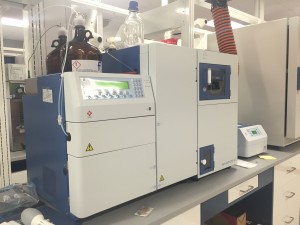In our toolbox of tricks for polymer analysis, gel permeation chromatography (GPC) is our go-to tool for determining the molecular weight of polymers. Why is it so useful?
“Molecular weight is a critical property of polymers, impacting their physical properties and durability,” explained Kyle Copeland, our General Manager. “It’s of interest to our clients to be able to determine the property accurately on a wide variety of polymer types. This is not only useful for raw material selection, but also for the determination of how molecular weight is being affected by various processes such as molding, drying, extrusion, sterilization, etc.”

GPC separates polymers based on molecular weight by introducing dissolved polymer samples into an instrument. A continuously flowing stream of solvent forces the molecules through a highly porous media (the stationary phase, or column). Small pores in the media make it difficult for smaller molecules to pass through, so they stay on the column longer than larger molecules. Once the molecules are separated by weight — really by size — we can employ various detectors to analyze the polymer molecules as they exit the column.
“Until now, PSI has not had the ability to perform in-house GPC analysis on materials that are not soluble at ambient/warm conditions,” Copeland explained. “Those types of materials constitute an extremely large fraction of the industry by sheer resin volume.”
The recent purchase of a Tosoh EcoSEC High Temperature GPC instrument means PSI is now able to offer high-temperature GPC analysis of polymers in-house. “Gel permeation chromatography (GPC) is a core competency at PSI,” Copeland said. “The addition of high-temperature gel permeation chromatography (HT-GPC) rounds out Polymer Solutions’ capabilities in this respect.”
